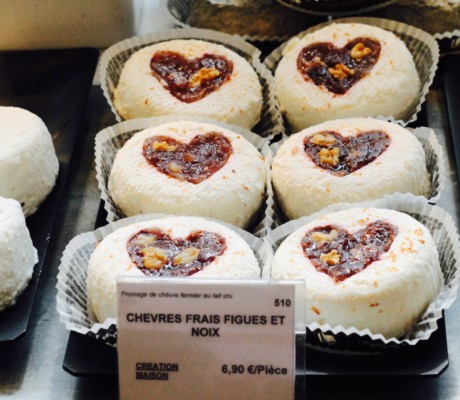
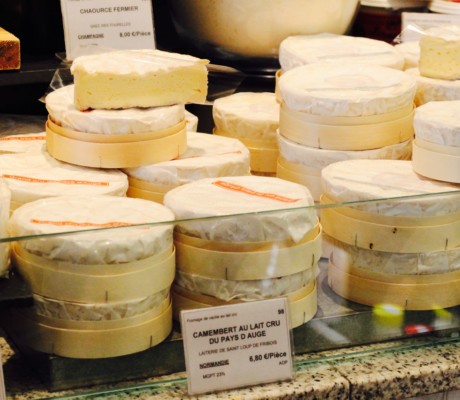
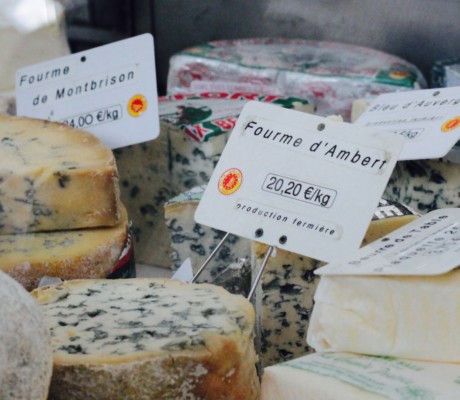
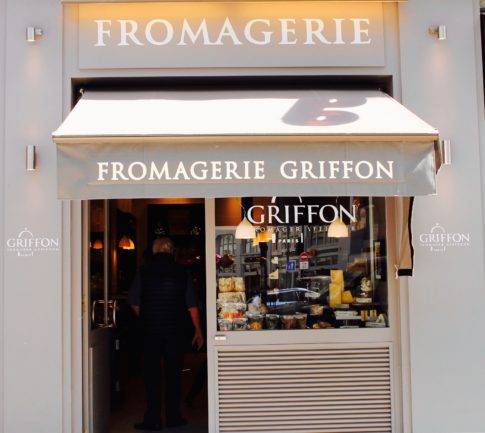
France is a cheese lovers paradise! Where else can you find so many different varieties of cheese and so many cheese shops (fromagerie)! These days a large number of French cheeses make their way abroad, but there is nothing like the selection to be found in even the most humble cheese shop in Paris or the cheese stalls in the markets.
Are there really 325 types of cheese? The real figure is probably more like 150 to 200 serious varieties but the number would be much higher if it included the hundreds of other local, homemade cheeses that are unlikely to be found outside their region of production.
For those who have not grow up with a cheese store on the corner, the variety can be a bit daunting and walking into the fromagerie, your first thought may be where do I begin? Don’t feel alone. Even the most seasoned gastronome may be unfamiliar with the astonishing array of French cheeses. However, there are some basic distinctions in French cheeses; in the type of milk that was used, in the cheese family (soft, hard, blue or brined), the care taken in the production method (industrial or artisanal) and finally the affinage, or how the cheese is aged, that can help you differentiate between the styles and guide you in your purchases.
Cheese in France is made from either cow’s, goat’s or sheep’s milk. They type of milk determines the taste. The most common milk used for cheese is cow’s milk (vache) followed by goat’s milk (chèvre) and sheep’s milk (brebis).
Sheep’s milk is buttery, with a high concentration of fat and protein. Goats milk is lighter, pure white with a mineral rich taste and a signature tang. Cow’s milk, sweet and slightly acidic, falls somewhere between the two.
Fromage speak:
Brebis: a cheese made from sheep’s milk and also the word for a ewe. La brebis is the ewe and Le brebis is the cheese. The French also use the word mouton for sheep but it is a general term and usually used in reference to animals that are raised for meat.
Chevre: the French word for both a goat and cheese made from goat’s milk. La chèvre is the female goat, Le chèvre is the cheese. Chèvre, unless it is sold fresh, is ripened 2 weeks or more. It is made into a variety of shapes including drums (crottins), logs (bûches), pyraminds, cylinders, cones and discs. Goat’s milk has a lower fat content than sheep or cow’s milk and is the easiest on the human digestive system.
Vache: a cow. Different breeds of cattle produce very differently flavoured milk. Sixty percent of the dairy herd in France is made up of Prim’Holstein, the rest are traditional breeds and essential for cheese production. Seventeen dairy breeds are present in France, 5 of which are part of a conservation program.* ( http://fr.ambafrance-us.org/spip.php?article5895)
Milk matters! Whatever the animal, good cheese comes from good milk, and good milk comes from animals that are well fed and looked after. Farmstead or fermière cheese, the best of raw milk artisanal cheese, is made from milk coming from the herd of the farm where the it is produced.
For a very long time, French cheese fell into two broad categories, frais or sec, “fresh” or “dry”. Then, in the 1870’s Emile Duclaux, a French microbiologist and chemist, a student of Pasteur’s, a former Lycèen of the Lycèe Saint-Louis in Paris and a graduate of the Ecole Normale Supérieure (need I say more…) decided cheese needed further classification. (of course he did!)
Duclaux devised a method that grouped cheese into families based on how they were made. A system that today is virtually unchanged. Briefly, under his schema, fresh cheeses came to be known as soft cheeses or pâte molles – (pâte in French means paste or whats inside the rind, la croûte) Soft cheese was further distinguished by the rind – those having a croûte fleurie (white bloomy rinds) or a croûte lavèe (rinds washed with brine or other liquids.) Fromages secs, or the dry, hard cheeses with a firm dense interior, pâte dure where split up into those which were simply pressed to remove their moisture, pâte presses and those where the curds where pressed and “cooked”, pâte press cuite. Finally, Les fromages bleus, blue cheeses, (also known as pâte persillée because of their marbled-like appearance resembling chopped parsley), were given a family all of their own.
Today, goat’s cheese (chèvre), fresh cheese (fromage frais) and processed cheese (les fondu) are also considered families.
Pâte moles croûte fleurie (White rinds):
Rich creamy interior with a soft outside. They are sometimes called “bloomy” because of the soft, furry white rind that is edible.
Ex:
♥Brie
♥Camembert
♥Pèrail (a soft, flat disc shaped sheep’s cheese)
Pâtes molles à croûte lavée (Washed rinds):
During a 2 to 6 month aging, the rinds of these cheeses are washed with brine, sometimes combined with alcohol, that encourages an exterior mold and gives them a characteristic orange-red colour. The rind should be soft and damp but not slimy. Most fall under the category of stinky cheese. But stinky notwithstanding, these cheeses are often milder than you expect! The rind on these types of cheese is generally not eaten.
Ex:
♥l’Epoisses
♥le Munster
♥le Roblochon
♥le Pont l’Evêque
♥le Livarot
Les Pâte pressées non cuites, (Uncooked pressed cheese):
The curds are pressed to drain the moisture. Aging takes at least 2 to 3 months during which the rind is continually brushed to ensure a smooth, humid-free surface. The interior texture can be anywhere from semisoft to firm. The rind is generally not eaten.
Ex:
♥le Saint-Nectaire
♥le Cantal
♥la Tomme
♥le Bethmale
♥le morbier
Pâte pressés cuite (Semi-hard and hard cheeses):
Curds are heated until they become solid and then pressed. The cheeses are formed in large cylinders and are ripened for a long time. This sort of cheese usually has holes caused by gas expansion within the curd during ripening.
Ex:
♥le Beauort,
♥le Gruyère,
♥le Comté
Blue cheeses: Roquefort, made from sheep’s milk, is the most famous in this category. Other blue cheese made from cow’s milk can be soft or hard, sharp or mild. The blue veins are created by bacteria injected directly into the formed cheese and allowed to grow. Bleu cheeses are ripened a long time in dark and humid caves.
Ex:
♥le Roquefort
♥le Bleu d’Auvergne
♥la Forme d’Ambert
Goat’s cheese: These could easily fit into other categories but there are so many of them that they have become a style or “cheese family” all of their own. Goat’s milk curds are ladled, not poured, into molds, resulting in a silky, flaky texture. They are made in a variety of shapes and can be soft, fresh and a bit chalky to firm, aged and somewhat crumbly.
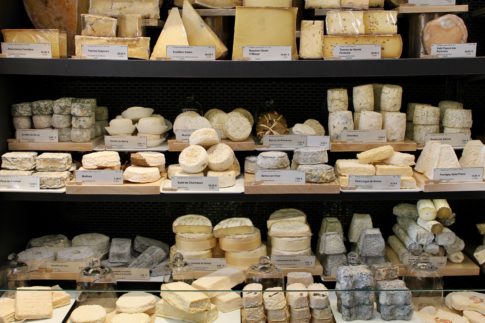
Ash covered cheese – after molding, some goat cheeses are dusted with a fine powder of charcoal ash, traditionally from oak but these days it is most often vegetable ash. The ash was originally used to protect the cheese during transport before refrigeration. Its continued use is more than decorative, it turns out that the ash ripens the cheese more quickly, so that an ash cover cheese will be creamier than a goats cheese without ash of the same age.
Ex:
♥le Chabichou
♥le Picodon
♥le Crottin de Chavignol
♥Selles-sur-Cher
Fresh cheese: High moisture, spreadable and soft, made for eating now. They are recognisable by their lack of rind or mould and made from either milk or whey.
Ex:
♥Fromage blanc – (a cow’s milk cheese related to quark. However unlike quark totally fat free and all protein. Fromage blanc can be used for desserts or savoury dishes, but because it is fat free will separate if cooked. Having said that, sometimes producers add cream to fromage blanc to make it richer!)
♥Le Petite Suisse
♥la Brousse
♥la Faiselle
♥le Cottage Cheese
Processed cheese: It sounds so much nicer in French! A blend of cheeses. Generally sold in individual portions and flavoured with various spices and aromatics. Boursin is a well known example.
Cheese, like other products in France has not escaped the effect of the supermarket. Grocery stores rely on uniform goods with a stable shelf life and as a result stock the cheese case mainly with industriel (factory made) cheese made from pasteurised milk, not the more delicate artisanal (artisan) or fermier (farmhouse) cheeses made from raw milk. Pasteurisation destroys potentially harmful pathogens, but it also denatures flavour-producing enzymes in milk that contribute to a cheese’s character. Some of these cheeses can be excellent and what I buy to cook with, a soft chèvre for a quiche for example or comté for a quick bread. However, they lack the intensity and texture of the living, breathing, raw milk cheeses.
To truly appreciate the wonderment of French cheeses, look for raw-milk cheese “fromage fermier” or “au lait cru” (raw milk).
Fromage speak:
Fermier: produced on the farm where the milk is gathered.
Artisanal: cheese produced in small quantities either from the milk of a single herd or from purchased milk from local farms.
Coopérative/fromage laitier: a dairy that sources its milk from one region but from several farms. The production method is generally semi-industrial.
Industriel: factory made from pasteurised milk without a specific source.
AOC stands for Appelation d’Origine Contrôlée or Controlled Mark of Origin and is a French symbol of quality. AOP (Appellation d’Origine Protégée/Protected Mark of Origin), is the European version, now replacing or being added on to products carrying the original French label. The rules are slightly different but the spirit of the certification is the same. Both are meant to protect the name of the cheese and guarantee their providence and process. They are not so much designed to be a stamp of quality but rather a stamp of approval.
The INOA, L’Institute National de l’Origine et de l’Qualitié, is the governing body of the AOC and their website contains an incredible amount of information on each qualifying cheese. There is a precise description of each cheese, including the type of milk used, the regions the milk can be collected from, the method of production and the length of time it must be aged among other things. Generally speaking these programs ensure that products with a long history and a strong sense of terroir are able to maintain their identity in the marketplace. At last count there were 45 appellations for cheese in France, each with its own set of rules and regulations. For a full list of AOC cheeses and all the information you could possibly want (in French and English) click here.
Keep in mind that many of these great cheeses have factory versions, so look for the AOC/AOP stamp when you make your purchase.
“Age is not important unless you are a cheese.” Helen Hayes
One step up from the Fromager is the “Fromagerie affineur”, speciality cheese shops that combine retail and affinage, the in house curing of cheese. Most decent size towns in France have at least one and Paris has dozens. These are specialist cheese merchants who buy young cheese before it is aged and before its ready to be eaten. The affineurs then age the cheese themselves to give it a specific set of characteristics that they’re seeking to impart or highlight. In other words, they buy their cheese directly from the producers and ripen it themselves, creating a different cheese than you would get if it had aged by the producer. It is an art and a process that can take anywhere from a few days to a few months depending on the cheese. And it means the cheesemonger can sell the cheese on the precise day, even the hour when they are at their optimum ripeness and at which they best express their distinctive characteristics.
However, the difference doesn’t mean the regular cheese merchants just buy and sell cheese. Part of the job of the “fromager” has always been to assess the cheese he receives and decide how to care for it; sometimes a cheese needs a to dry out for a few days or to be spritz to take on more humidity or needs a little more time to mature. Properly storing and caring for cheese is critical to ensure that it is at its best when presented to the consumer.
“Affinage”, the curing and maturing of cheese is a very import part of cheesemaking. It is a delicate process and requires an excellent knowledge of cheese and a constant attentiveness. It is a tedious and ritualised procedure – washing, flipping, brushing, patting, spritzing – in cool, damp conditions, that allows the cheese to take on its own special texture and flavour. In general, the ageing happens on the farm, dairy or factory where it is made and the cheese, when delivered to the cheesemonger is ready to be consumed.
♥Ask for help. If you are not sure what you want, ask for suggestions. In general the fromager is an expert, loves his job and is more than happy to give you advice.
♥Ask for whats in season. Some cheese, like fruit and vegetables have seasons. Chèvre is better in the spring after the kids are weaned and cheese production , Beaufort in the fall and Vacherin Mont d’Or, with the lovely birch bark encircling the rind is at its best in the mid-winter months
♥Ask to know if their shop has a speciality: some shops specialise in goats cheese, another in aged mountain cheese, some in blue.
♥Be adventurous and step outside of your cheese comfort zone! You will be in for some very nice surprises.
Eric Lefebvre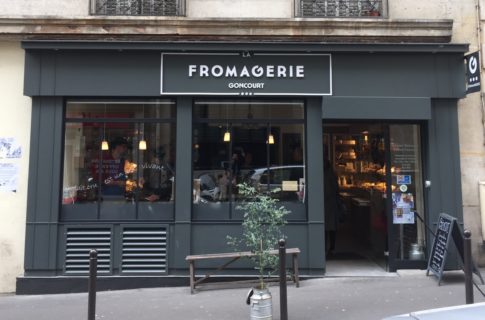
229, rue de Charenton, 75012 Paris
Chez Virginie
54 rue Damrémont, 75018 Paris
Alléosse
13, rue Poncelet, 75017 Paris
Barthélemy
51 Rue de Grenelle, 75007 Paris
Fromager Marie-Anne Cantin
12 rue du Champ de Mars, 75007 Paris
Le Fromagerie Cler
31 Rue Cler, 75007 Paris
Griffon Fromager Affineur
23 bis ave de la Motte-Piquet, 75007 Paris
Quatrehomme
62, rue de Sevre, 75007 Paris
Fromagerie Laurent Dubois
2 Rue de Lourmel, Paris 75015
97-99 rue Saint Antoine, Paris 75004
47 Ter Boulevard Saint-Germain, Paris 75005
Fromagerie Beaufils
118 rue de Belleville, Paris 20
20 rue Cadet, Paris 75009
Martine Dubois
80 rue de Tocqueville, 75017 Paris
Fromagerie d’Auteuil
58 rue d’Auteuil, 75016 Paris
Fromagerie Goncourt
1 rue Abel Raboud, 75011 Paris